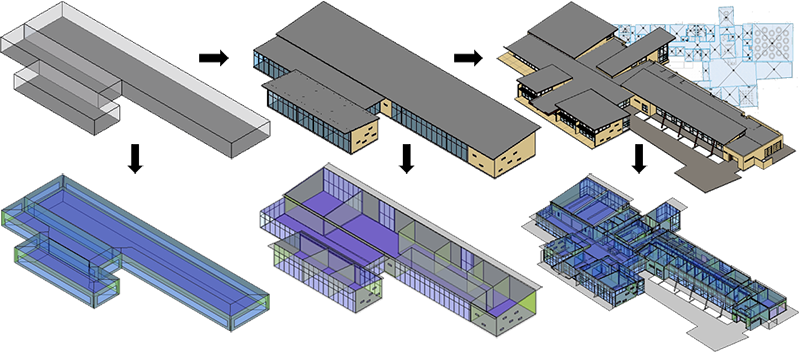Before performing energy optimization of an architectural model that contains masses or detailed elements or both, create an energy analytical model that is as complete and accurate as possible.
By performing energy optimization at every stage of the project life cycle, from conceptual design to schematic design to design development, you can continuously target and drive towards better energy performance.
- To learn how to use masses for energy optimization, read
Create the Energy Analytical Model: Massing.
That topic describes what is required for masses to be included as part of the energy analytical model and how to represent surrounding structures that will shade the building.
- To learn how Revit uses architectural elements for energy optimization, read About Creating Energy Analytical Models from Architectural Elements.
- To learn how to create a complete and accurate energy analytical model from a detailed architectural model, read Create the Energy Analytical Model: Detailed Architectural Model.
- Use a mix of these methods to generate an energy analytical model from your architectural model that may include masses and detailed elements.
 Create an Energy Analytical Model
Create an Energy Analytical Model
- When you are satisfied with the energy analytical model, go to the next step: generate the energy analysis.
